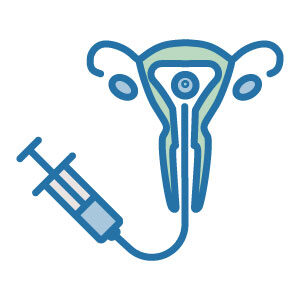PROCEDURES

It is our job to take every precaution possible to ensure a positive outcome at the time of delivery. We keep abreast of the latest state-of-the-art technology, so we remain on the cutting edge. Beyond consultations and ultrasounds, we also might recommend the need for one or more of the following procedures.
Amniocentesis
Amniocentesis is a test performed at 16 weeks or beyond that analyzes a small amount of amniotic fluid surrounding the fetus. The fluid contains cells providing the baby’s genetic information. It is extracted by needle from the mother’s abdomen. An ultrasound is used as a guide to determine a safe location for the needle to enter the amniotic sac so the fluid is safely removed. The purpose of the test is to detect chromosome abnormalities, neural tube defects, fetal lung maturity, infection, and genetic disorders with a 99% or higher degree of accuracy. The procedure is performed in the ultrasound room and usually takes less than a minute to collect the fluid sample.
Cervical Pessary Placement
This is used as an intervention to prevent preterm birth in women at high-risk for preterm birth, including those with short cervix length. A silicon pessary, which is a soft, removable device, is inserted in the vagina around the cervix to support it and change its direction toward the tailbone, thus reducing direct pressure from the uterine contents on the cervix. The pessary is an in-office procedure that is similar to having a Pap smear.
Cervical Cerclage Placement
This might be recommended if the mother’s cervix is at risk of opening before the baby is ready to be born. A cervical cerclage is a surgical procedure that is performed in the hospital, usually as an outpatient procedure. General or spinal anesthesia is required. The procedure is done through the vagina, where a suture is placed around the cervix, like a hemstitch, which is cinched tight to help keep the cervix closed.
Fetal Cord Sampling/Transfusion
This is usually performed when the baby is suspected to have severe anemia or thyroid problems. Guided by ultrasound, a needle is inserted into the umbilical cord to collect a fetal blood sample and perform a blood transfusion. This test is conducted in the hospital, usually as an outpatient procedure.
External Cephalic Version
About 4% of babies are still breech in the last few weeks of the pregnancy, which means they are positioned to come out bottom or feet first. External Cephalic Version or ECV is a procedure that turns a fetus from breech to a head-down position before labor begins. This makes it possible to have a vaginal birth. ECV cannot be done if multiple babies are expected.
